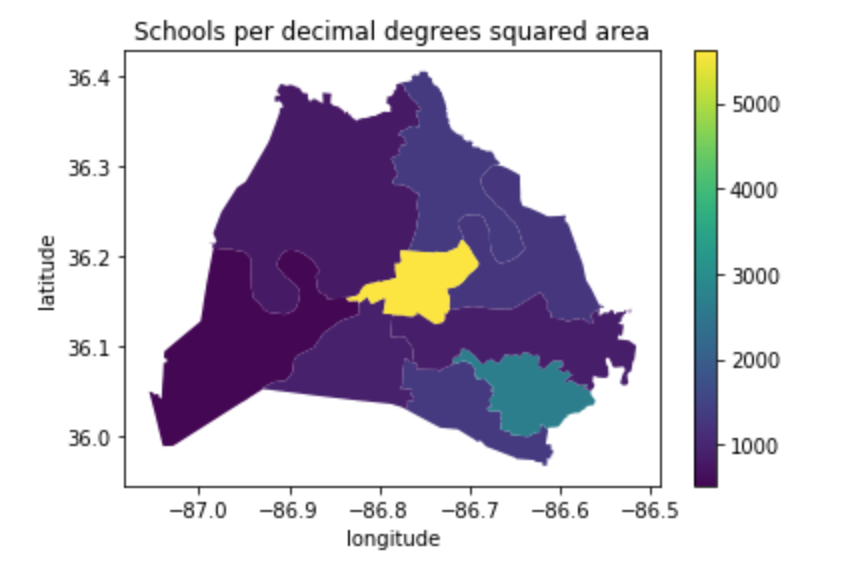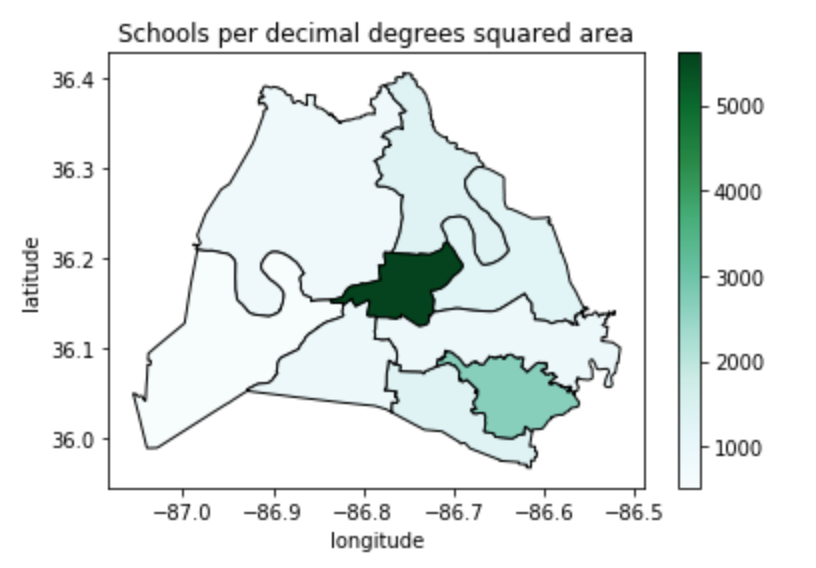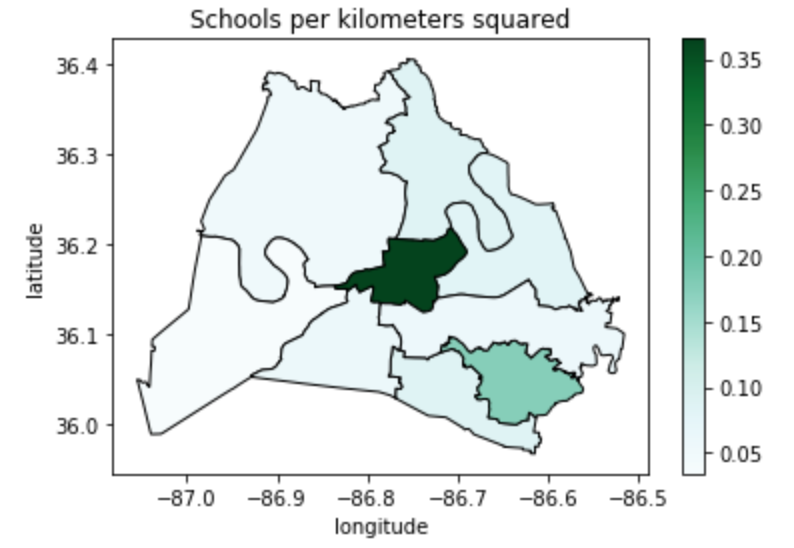Choropleths with geopandas
Visualizing Geospatial Data in Python

Mary van Valkenburg
Data Science Program Manager, Nashville Software School

Choropleth with GeoDataFrame.plot()
districts_with_counts.plot(column = 'school_density', legend = True)
plt.title('Schools per decimal degrees squared area')
plt.xlabel('longitude')
plt.ylabel('latitude');

Choropleth with GeoDataFrame.plot()
districts_with_counts.plot(column = 'school_density', cmap = 'BuGn', edgecolor = 'black', legend = True)
plt.title('Schools per decimal degrees squared area')
plt.xlabel('longitude')
plt.ylabel('latitude');

Area in Kilometers Squared
# starting CRS
print(school_districts.crs)
epsg:4326
# convert to EPSG 3857
school_districts = school_districts.to_crs(epsg = 3857)
print(school_districts.crs)
epsg:3857
Area in Kilometers Squared
# define a variable for m^2 to km^2
sqm_to_sqkm = 10**6
school_districts['area'] = school_districts.area / sqm_to_sqkm
school_districts.head(2)
district geometry area
1 (POLYGON ((-965.055 4353528.766... 563.134380
3 (POLYGON ((-965.823 4356392.677... 218.369949
# change crs back to 4326
school_districts = school_districts.to_crs(epsg = 4326)
print(school_districts.crs)
epsg:4326
print(school_districts.head(2))
district geometry area
1 (POLYGON ((-86.771 36.383... 563.134380
3 (POLYGON ((-86.753 36.404... 218.369949
# spatial join to get districts that contain schools
schools_in_districts = gpd.sjoin(school_districts, schools_geo, predicate = 'contains')
# aggregate to get counts
school_counts = schools_in_districts.groupby(['district']).size()
# convert school_counts to a df
school_counts_df = school_counts.to_frame()
school_counts_df = school_counts_df.reset_index(level=0)
school_counts_df.columns = ['district', 'school_count']
# merge
districts_with_counts = pd.merge(school_districts,
school_counts_df, on = 'district')
districts_with_counts.head(1)
district geometry area school_count
1 (POLYGON ((-86.771 36.383.. 563.134380 30
Calculating school density
# create school_density
districts_with_counts['school_density'] = districts_with_counts.apply(
lambda row: row.school_count/row.area, axis = 1)
# plot it
districts_with_counts.plot(column = 'school_density', cmap = 'BuGn',
edgecolor = 'black', legend = True)
plt.title('Schools per kilometers squared')
plt.xlabel('longitude')
plt.ylabel('latitude')
plt.show();

Let's practice!
Visualizing Geospatial Data in Python

